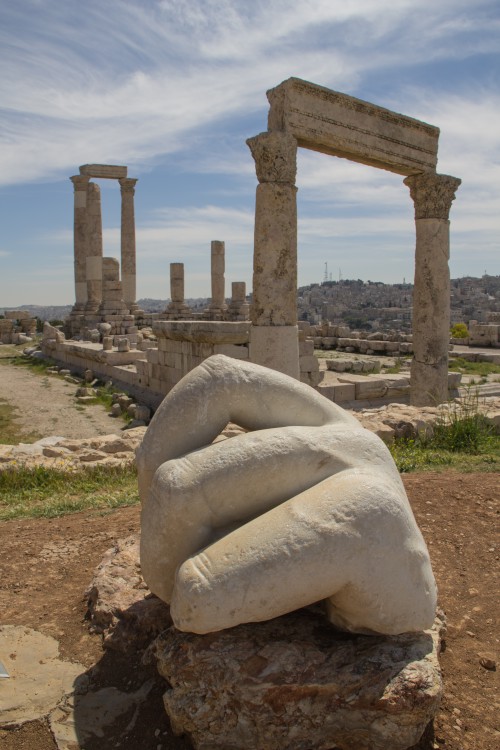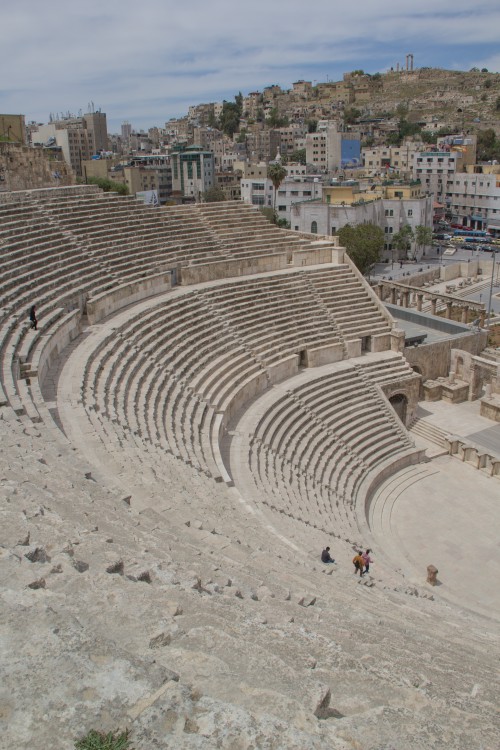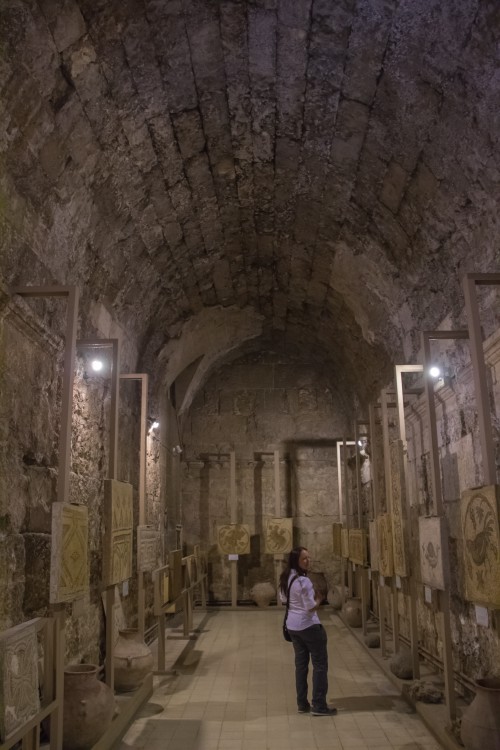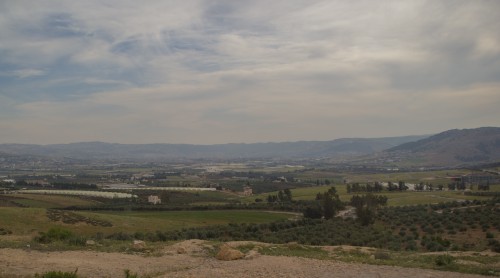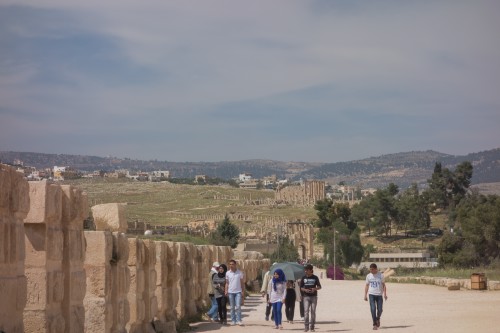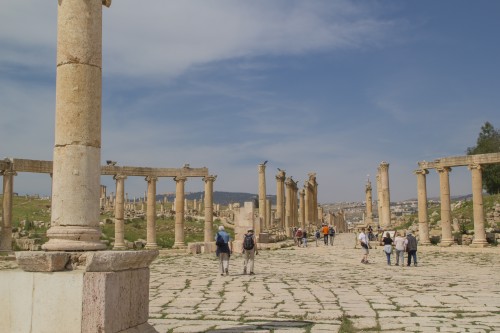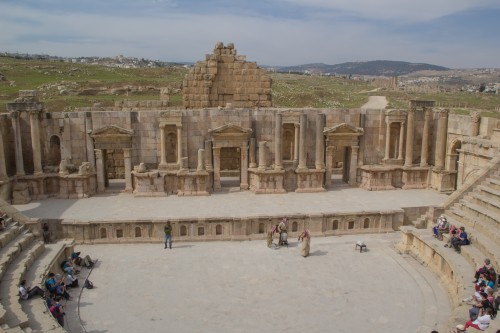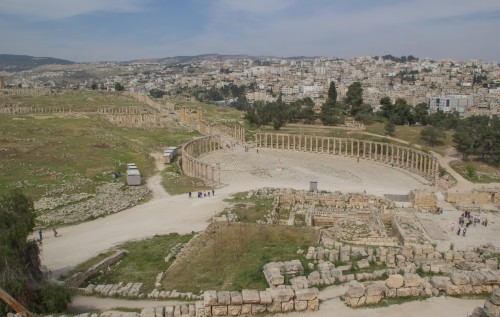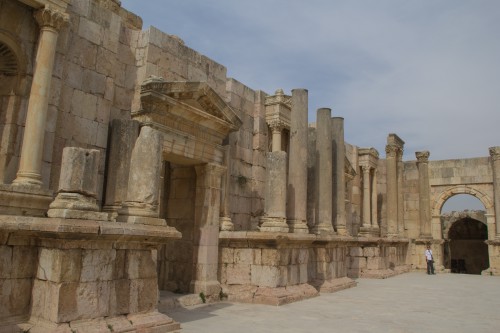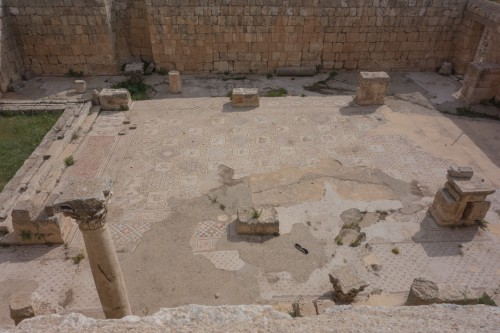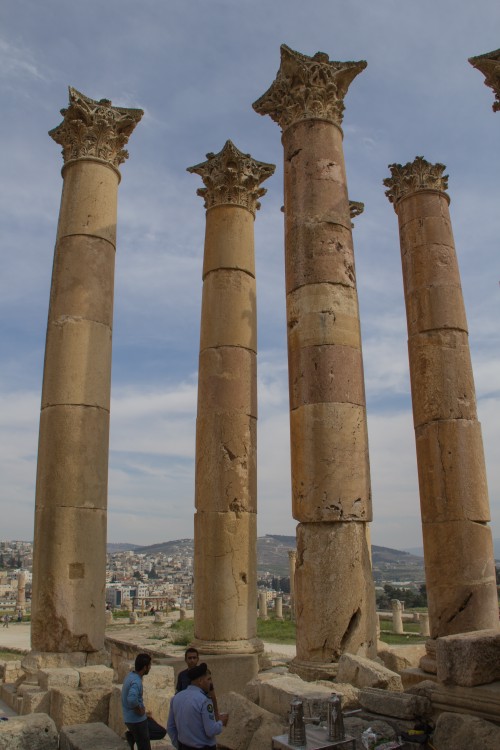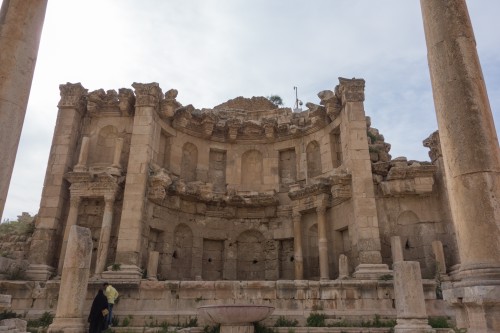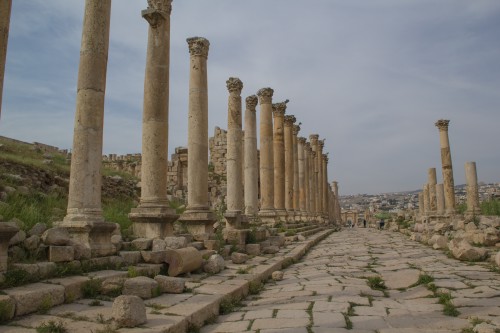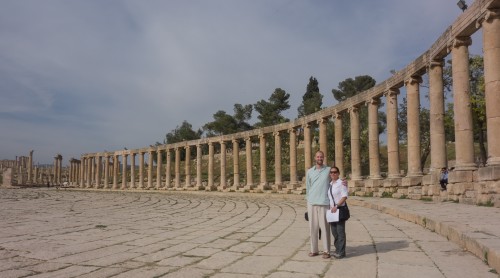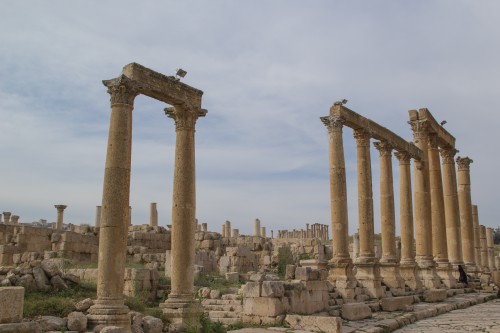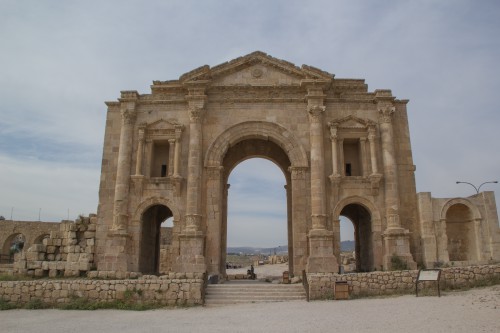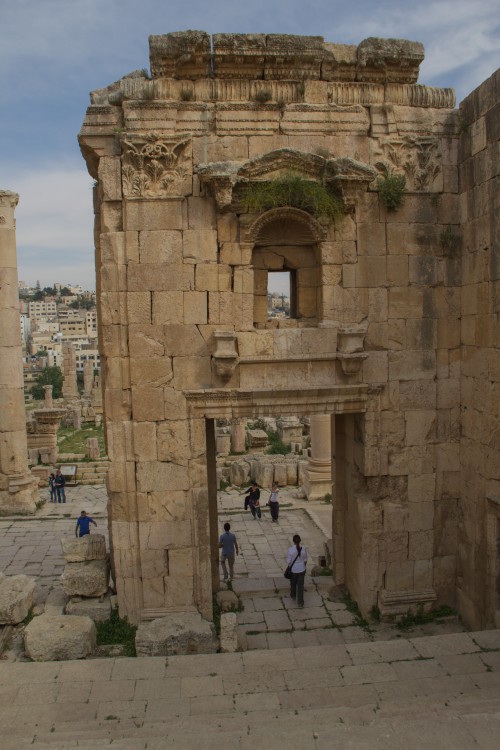We both woke up before our alarm, even despite going to sleep after 2am. We were able to get breakfast on the 8th floor "club level." It was quite was nice, with good views of the city. Looking down at the parking lot, we saw a Hummer with a machine gun mounted on top; perhaps coincidentally, there was some bigwig-looking military guy at breakfast. We thought maybe it was his ride. Downstairs, the lobby was packed, with lots of people in suits and other power brokers. We met an A&K representative, Mohammed, and he informed us that our "small group tour" would consist of 2 people, just us. So we were basically getting a private tour for the cost of a group tour.
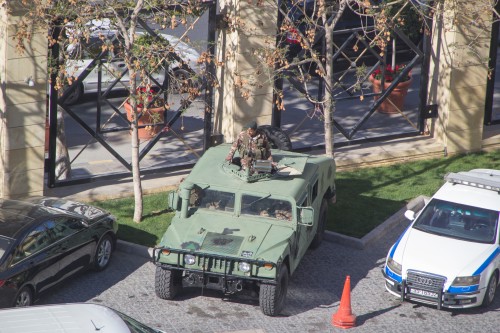 |
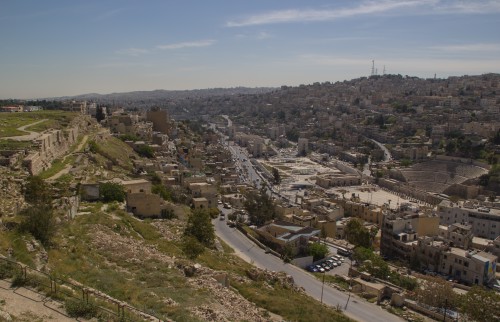 |
We then got into our van, and Mohammed (our driver) took us to meet our guide Aziz. Aziz seemed to be about our age, maybe a bit younger, and told us that he's been guiding for 13 years. Our Amman city tour started by seeing the newer part of the city in the west, driving around some of the nicer neighborhoods. Aziz told us that we had to put our cameras down as we approached the US embassy. The US, UK, and Israeli embassies are quite heavily protected, and outside the US embassy we saw a tank.
 |
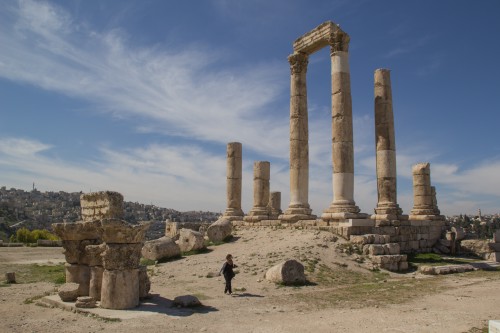 |
Our first stop was at the Citadel, which is an area with a number of old Roman ruins on one of the city hilltops. It has actually been populated from well before the Romans, and is one of the planet's oldest continuously inhabited places (roughly 7000 years now). Everyone apparently built on top of everyone else, so excavations are basically digging through time. We visited the Jordan Archaeological Museum, which houses a number of items from the area, but unfortunately no longer the Dead Sea Scrolls, where some of the scrolls were on display until relatively recently (they've now moved to a different museum). While wandering around the Citadel, we saw a mammoth plane shortly after take-off. Aziz informed us that it was a US military cargo plane, and that he's seen a lot more of these in the last year or so.
 |
We walked from the Citadel down the hill to a school, where we got to meet the principal, saw a couple of the classes, and got some background on the school. It was interesting, but also a bit random - we think we were brought there since our tour group sponsored or contributed to the school. We got back in the van and drove down the hill to the Roman amphitheatre. We could see it from the Citadel, and not surprisingly, we could see the Citadel (most notably the Temple of Hercules) from the theatre. The theatre was built in the 2nd Century AD, and has a seating capacity of 6000 people. The steps are quite tall, and Justin started to cramp whilst walking back down the stairs, probably from dehydration from the long flight. In front of the theatre, there had been a large open area that was "reconstructed" with entirely new material, and stands out (not in a good way) in comparison to the nearly 2000 year old structures.
We then headed out of Amman, and headed north towards Jerash. On the outskirts of Amman there was a huge Palestinian refugee camp, which we learned houses over 80,000 people, and is basically a self-contained city. Aziz indicated that in Jordan, unlike some other countries, refugees aren't really refugees, as Jordan offers citizenship and the ability to move about the country. So it was interesting to us that so many people were essentially voluntarily staying in such a large camp. We grabbed lunch just before getting to Jerash, and had a massive amount of "Jordanian" food, which is basically a mixture of Lebanese, Syrian, Turkish, Greek, etc. We had some grilled meat, lots of breads and spreads, tabouli, hummus, baba ghanoush, different kinds of olives. We had enough to feed about 6 people, and Aziz told us that until recently, the restaurant used to bring even more.
 |
We had heard from Justin's co-worker Steve and our friend Mike that Jerash was an unexpected treat, so for us it wasn't unexpected, but it was still a treat. It is a full Roman city in the middle of a current-day Jordanian city. Jerash (aka Gersa or "Antioch on the Golden River) was founded by Alexander the Great in 331 BC, and was populated as a standalone city for several hundred years before being absorbed into the Roman Arabian province. The city is remarkably well-preserved, and was of such a scale it was possible to get a rough idea of how the city must have looked back in the day. There were numerous gates (including the very impressive Hadrian's Arch), a hippodrome, shopping areas, a couple fountains, two temples (dedicated to Artemis & Zeus), the main drag (called the Cardo), a big forum surrounded by columns, a theatre (where we saw some Bedouins playing bagpipes, because why not?) and a substantial amount of still-standing city walls. We wandered around the various parts of the city for a couple hours, then got back in the van to head back to Amman.
We were both a little sleepy on the way back, but not too bad considering this was our first full day. We got back to the hotel around 5:45, and had a couple drinks at the free happy hour. It was sparsely attended, but there were a bunch of US servicemen from different military branches sitting in the vicinity, comparing notes about their respective work. As we get older, they look so much younger and younger. After drinks, we grabbed dinner downstairs at the Lebanese restaurant, and it was almost identical to what we had at lunch. Once again, it was entirely too much food. We weren't sure if it was because we were American and Americans have a reputation for eating a ton of food, or whether there is just an assumption that no one will finish but it's okay. After dinner, we came up stairs, very tired, and went to sleep almost immediately.






